words: Benjamin McCulloch
The aim of Alpha-Ville is to ‘address the transition from a digital to a post-digital culture’ and my main interest there lies in their attempts to highlight how the web has become so central to daily life. What does this mean for creative people? The web is a game-changer for artists; the fact that it allows people to cut out many of the middlemen of yesteryear (galleries, record companies, publishers etc.) means that those that use it well can become autonomous and control their future in a way that artists in the past could only dream of, and those that aren’t so successful can find it hard not to disappear in the cacophony. My attendance at Alpha-ville gives me food for thought on this matter as well as introducing me to new artists, ideas and items that I’ve not been aware of before.
When I first enter the main exhibition space I pass by an area defined by tiny walls containing a wee army of miniature robots blinking in the darkness, as well as a growing mountain of print-outs of updates added to Wikipedia. I pass by on my way to a talk by Helen Hockx-Yu on her work archiving and preserving the UK websites that are of ‘scholarly or cultural importance’. My first thought on this matter is why bother? The web is constantly evolving in what seems to me to be a productive and worthwhile evolution. I admit to myself that I’ve never accepted the web as being anywhere near finished (in a way that newspaper, television and radio content can be seen as being in a set format), that its current unpredictable state was a teething stage, and in some small way I’ve always assumed that it would one day all settle down and become something that is nice, civilised and safe for children. This is my big naive mistake. The very fact that the web is such a free-for-all, a place where anything can happen as long as there are great ideas, designs and coding talent is the reason why it should be catalogued. This is a time when the subtle chaos is an enabler for people to make the web what they want it to be; to bring their work to the masses on a relatively level playing field and we may one day look back on this time and wish we had a second chance.
After the talk I view the pile of Wikipedia print-outs. This piece is called Edits by Dean McNamee and Tim Burrell-Saward. Every time someone updates an article on Wikipedia their entry is made physical by way of a small printer mounted up in the ceiling, and the printed text then drops to the floor and adds to the pile. I look on it with fresh eyes and realise that it reinforces a potent point that was contained in the talk. While Wikipedia is designed to be a place that is democratic and free for definitions to be formed by anyone, this is the aspect that is equally applauded and criticised. Discussions I’ve had will often include the sentence “take it with a pinch of salt but I saw something on Wikipedia that said….”. While many people will admit to the fact that they think Wikipedia is a great idea, I’m not sure that many would swear their life on its content being entirely accurate and therefore a suitable archive of information. However when I view a print-out of a Wikipedia article I feel something slightly different, and I’m aware that this is slightly bizarre. It becomes real and in some small way the words printed upon it seem more believable. It becomes something that is wasteful; paper, ink and energy have been used and it will very likely end up in the bin or recycled once the artwork is no longer on display. To me the point is that it didn’t have to exist in solid form. This is at odds with how I view the Internet, which I feel is a place where no matter how daft the information is at least I don’t have to take it too seriously as it’s not hurting anyone right? It’s as if I had previously felt that the boundary between online and reality means that what happened on the web didn’t really matter in my daily life as the two could be quite easily separated. However it’s true that I spend far more time on Wikipedia than searching through libraries, and I spend more time on social sites like Facebook than I do socialising. I’m sure I’m not alone in these two facts. I should probably start taking the web more seriously!
The Alpha-ville Festival had a varied exhibition space with works that ranged from abstract pieces of art to simple devices for everyday use, one example of the latter being a machine called Pas a Pas by Ishac Bertran which was designed to allow children to easily experiment with animation. I was shown how the device operates by one of the Alpha-ville staff and it did indeed seem to be very intuitive. I could imagine children getting to grips with this easily in the same way that smart-tables are being used in schools now. I’d say that encouraging the children to animate simple coloured blocks seems a good idea as it means that they have props to use straight away. One note of caution though – the vintage Moog synthesizer styling is definitely to my taste but I think that when children have had the chance to animate a plasticine rendition of Shrek on it the owner will wish that they hadn’t had to fork out for an expensive wood finish as plasticine goo and wood are hard to separate once they’ve discovered each other! It’s a well designed compact device though.
One piece that spoke to my inner child was Influencia by David McLellan wherein a small area had been cordoned off to quarantine a colony of robots. When I first saw them my initial reaction was to marvel at how great they looked – a combination of Wall-E’s sad bug eyes and the wee flying saucers from Batteries Not Included (an 80’s movie classic made in the time of Steve Gutenberg, silly tough-guys with punky leather jackets and robots who, sob, just want to be taken seriously even when they say daft crap like “Johnny Five is alive!”). I was transfixed. I thought the idea was fantastic – to separate the robots in their own small area with tiny walls so that although the border was easily crossed, you still had to choose whether you wanted to step into their lair (docking station?) or not. I had to check and re-check that this was actually the way the exhibit worked – was I really allowed to go into their space? They looked flimsy and extremely delicate and I expected that the artist had intended for people to feel a need to approach them with kid gloves in they way you would approach a new-born baby. Perhaps I was completely wrong and the intended mood was supposed to be purely scientific. Either way, I wanted to know what would happen when I stepped into their space.
Sadly, very little worth mentioning happened. One robot’s little bug eyes lit up in an ominous red and it approached me in a slow arc through it’s wee robot buddies and then it bumped off my shoe. Worried that I’d break an exhibit I carefully stepped back to stop this happening again, at which point the same wee robot’s eyes went dark again. Then another one further back in the space spun round on the spot, stopped, and went dark also. They remained still for some time so I tried to encourage them to do something by making animated movements that I hoped their sensors would pick up. Nothing happened. To be more specific, what really happened was that some of them seemed to have a brainwave which enlivened their red eyes for a moment, and then they must have thought better of it and decided to go back to sleep. Perhaps it was me? Maybe they were tired after a riotous conversation earlier in the day with some dude from Dalston who can rap in C++ code? Who knows? Unfortunately after my initial excitement I left this exhibit feeling that Johnny 5 was most definitely not alive.
Pas a Pas by Ishac Bertran
Influencia by David McLellan
An Alpha-ville exhibit that really took my attention was called The Johnny Cash Project. The aim of this project is collaboration through the web; to create a video to a Johnny Cash song where each frame has been contributed by a different person around the world and all are collated and shown on the dedicated website. This seemed to me to be a good idea. It also pointed something out to me that made perfect sense: although the web can be a riot of information with seemingly little order (and as a consequence it is a very hard place for the wheat to rise above the chaff), when someone has a good idea, and the talent to orchestrate the people and ideas that the web let’s them access, then there is potential for great things to occur. In the particular case of the Johnny Cash Project the emphasis is less on the individual contributions of each artist, and more about the way that each person’s view gives a wider impression when combined. In this video collage the frames are constantly changing and I’m given a glimpse of each contributor’s idea. I see skulls, flowers, guns, halos, barbed wire and more skulls. Although it could just as easily be a video for a Norwegian Black Metal band as Johnny Cash, it’s exciting to see all of these elements (and many, many more) whizz past my eyes! The project is in constant evolution too; it is always open for contributions and new frames are being added daily so in theory you may never see it the same twice. It’s as if the overwhelming flow of information that the web presents to us can be transformed into something beautiful and exciting when someone takes the reins and guides it towards their desired result.
Another exhibit that explores similar themes in a unique way is Cell by Keiichi Matsuda and James Alliban. The angle that Cell presents is to show us a reflection of ourselves where our body has been replaced with a mass of tangled text. The exhibit makes use of Microsoft Kinect sensors which follow movements and a projection screen which displays the text (which are randomly picked words from keyword tags from randomly picked online profiles) and in so doing it aims to give us a unique insight into our online selves by providing it as a mirror image. It’s another great example of artists orchestrating information from the web in imaginative ways. As the text is entirely made up of words that people have chosen because they feel that it defines them, there is something weirdly enlightening about this – among many other things I’m labelled with ‘blazing saddles’ and ‘menace to society’ and it’s hard to imagine how these labels can really be effective at representing a personality. The flip-side is that they are used everyday for that exact purpose and the lack of depth makes me feel like a caricature – like a description on the back of a movie box, people are reduced to soundbites and superlatives, ‘awesome’ this and ‘lol@’ that. Cell is presented in such an instantly enjoyable way that it’s hard to not get engrossed in it, either by viewing your reflection or those of others. It will be going on tour soon so check the link below if you’d like to find where it’s going next.
I encountered an exhibit called BitQuid hidden away in its own space, where the surrounding barrier allowed viewers to be immersed in its peculiar glow. It was composed of a mass of tubes laid on the floor following a circuit around the room, through which a combination of clear and reflective liquids flowed to a repetitive rhythm. The constantly alternating flow of liquid between clear and reflective meant that there was definition to the movement; the reflective liquid represented content and the clear liquid represented the gaps between. The artist, Jeroen Holthuis, aimed to “transform bits to atoms” by representing computer-based binary 1s and 0s as a flow of liquid in the real world. This piece was one of the few at Alpha-ville that didn’t invite the viewer to interact with it, and therefore one can only watch as the endlessly repeating rhythm continues onwards like watching a line of ants following a set route from their hive to food and back again. I found it calming, as if the digital flow of information has become an accepted phenomena like the flow of the tides or the rotation of the planet.
My Alpha-ville experience ended with some films and documentaries showed in the cafe upstairs in Netil House. I arrived in the cafe to see a video of Purple Haze by Jimi Hendrix remastered in ASCII (American Standard Code for Information Interchange) code. It’s not something that’s easy to describe, basically the video becomes a hypnotic swirl of seemingly random text that only starts to evoke the image of Hendrix and his band performing the song after you’ve been viewing it for a minute or so. The sound is comical – what once was a snarling psychedelic song about drug experiences has become a tinny Muzak ditty that could be piped into a Toys R Us tannoy system if it weren’t for the gnarly screeching digital distortion that the ASCII code has imparted on the material. I found it on the Internet should you want to view it, amongst many more ASCII Rock pieces (go on, I dare you, follow the link at the foot of this blog).
Finally a documentary titled PressPausePlay was projected for our enjoyment. It’s a well-made documentary about the effect that the Internet has had on artists and how they present their work. It made for fascinating viewing and touches on many of the important issues that we all face, such as whether it is a good thing that there is now no ‘middle-man’ between the artist and their audience, thereby meaning that everyone can easily approach a potential audience even though it’s become harder to navigate through the clamour of attention-seekers. The film makes a good job of answering this question and more and left me feeling positive about the Internet as a resource to people who want to make their living from creative pursuits. It seems that the Internet has broadened the potential audience that every artist has available to them, and possibly made it a little easier to connect with them but to the detriment of being able to hold their attention once that first connection is made. The lasting impression Alpha-ville gave me is that the Internet is a phenomenon that is barely understood, and those that explore it and learn to focus its many peculiarities into meaningful forms will be able to stand out from the din of the mundane. Thanks Alpha-ville and thanks to Central Station for helping me to attend the festival.


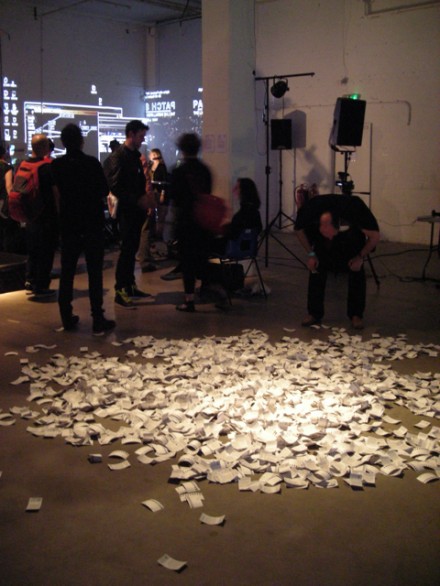
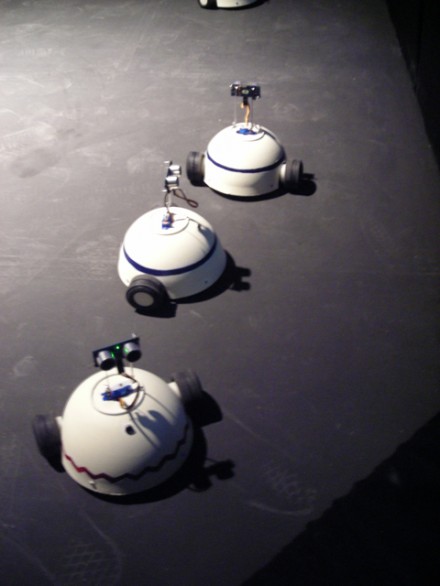
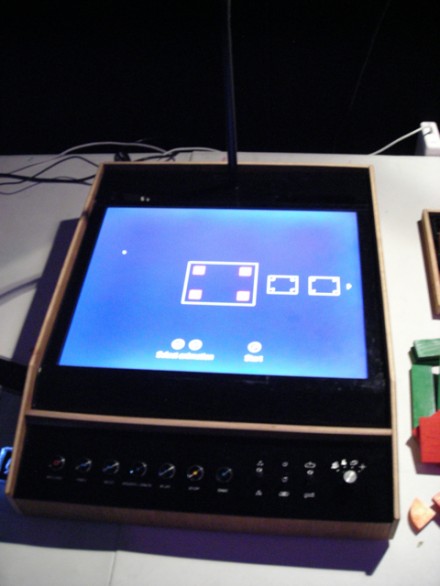

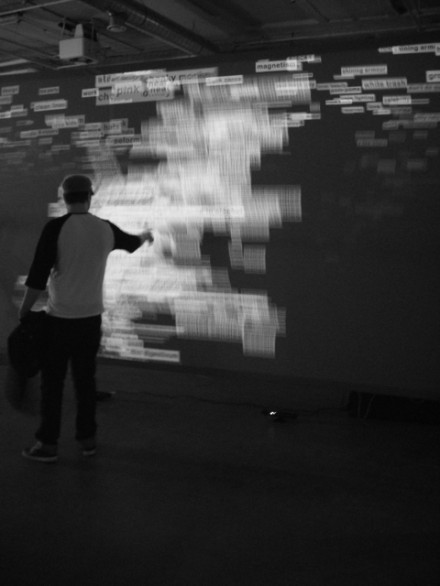
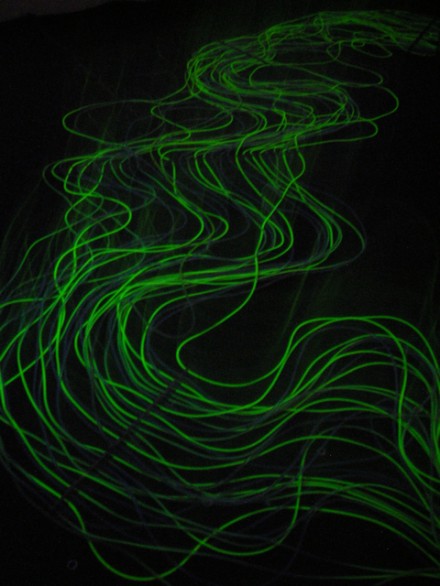
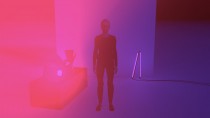
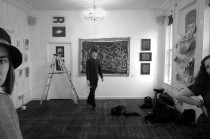










Comments